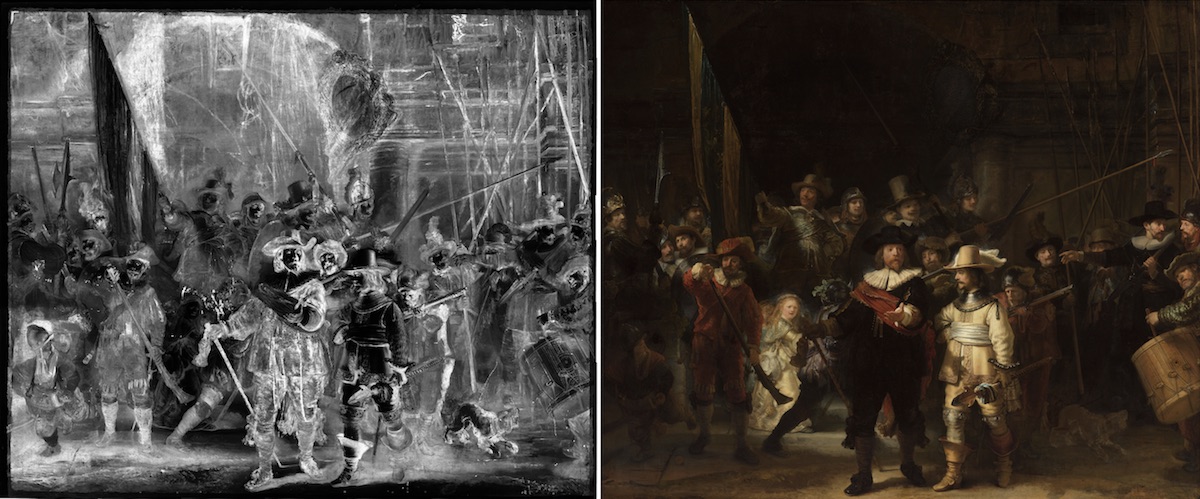X-Ray technology has uncovered a hidden sketch under the surface of Rembrandt’s The Night Watch. The discovery now allows us to look over the artist’s shoulder and experience the first steps in making a masterpiece. The team of Operation Night Watch researchers have been working at the Rijksmuseum for the past two-and-a-half years, meticulously mapping The Night Watch using the most advanced imaging techniques and computer technology. Their work has produced an unprecedented volume of data that offers a vastly improved understanding of the creation process and the painting’s current condition.
The discovery of the sketch represents a breakthrough in this research
Taco Dibbits, Director of the Rijksmuseum: The discovery of the sketch represents a breakthrough in this research. We always suspected Rembrandt must have made a sketch on the canvas before embarking on this incredibly complex composition, but we didn’t have the evidence. We can look beneath the surface of the paint better than ever before, and now we have the proof, giving us a real understanding for the first time of how the painting was made. It is fascinating to see Rembrandt searching for a suitable composition. We have discovered the genesis of The Night Watch.
The underpainted sketch corresponds with our understanding of Rembrandt’s spontaneous approach to composing directly on the canvas itself. This discovery was only possible because new technologies allow us to look through the layers of paint with greater specificity than ever before and analyse the materials Rembrandt used in minute detail. The artist applied a brown ‘quarts’ ground and used a beige paint with a high chalk content for his rough sketch. No other paintings by Rembrandt have been discovered that were prepared using this type of paint.
Petria Noble, the Rijksmuseum’s Head of Paintings Conservation: Each new detail gives us another insight into Rembrandt’s creative process: his original idea, his thought processes and his material and artistic choices. An all-encompassing approach such as this would have been impossible even a few years ago, which means Operation Night Watch is setting a new standard for the study of painting. All these discoveries now prompt us to look at Rembrandt’s other paintings with different eyes – we now know what we should be looking for.
Rembrandt must have spent considerable time searching for the ideal composition for this large painting. Previous studies of The Night Watch had already revealed dozens of pentimenti or modifications made by the artist himself. We have discovered even more changes using the latest imaging techniques. We can see, for example, that Rembrandt originally painted feathers for the helmet of militiaman Claes van Cruijsbergen but later painted them over. The artist also adjusted the leg position of Rombout Kemp – the many scans revealed that the leg initially was painted in a different place at an earlier stage. There are also indications of a different sword between the captain and the lieutenant. Finally, it has become clear that Rembrandt initially indicated a more significant number of spears projecting above the company.

